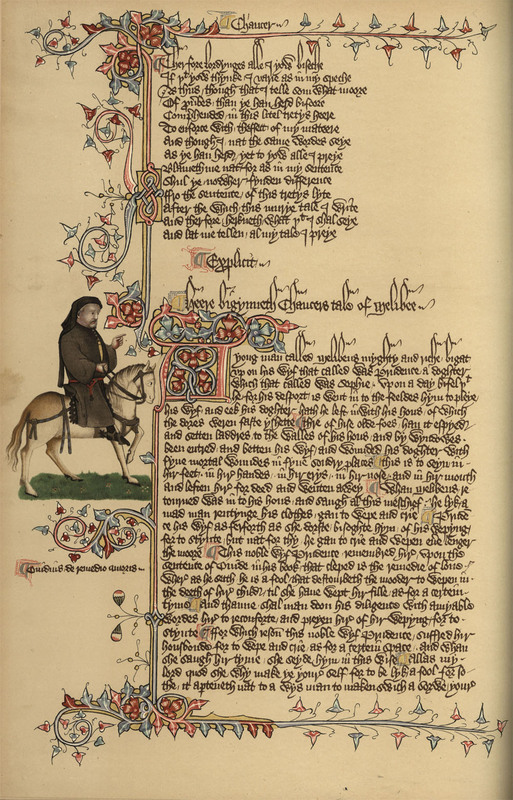The Ellesmere Chaucer
Chaucer, Geoffrey, 1340?-1400.
The Ellesmere Chaucer: Reproduced in Facsimile.
Manchester, England: The University Press, 1911. 2 Volumes.
Call Number: (SPL)(FOL) Z 115 Z .C4
Special Collections, Golda Meir Library
This facsimile is the first reproduction ever made of this manuscript, considered a prime authority for the text of The Canterbury Tales. Many scholars rank this work with the manuscripts of John Milton as the most historically significant surviving manuscripts in the English language.
The manuscript, produced on vellum at a London scriptorium around 1410, takes its name from the Ellesmere collection, established in the late sixteenth century by lawyer Sir Thomas Egerton who was Solicitor General and Lord Keeper of the Great Seal under Elizabeth I as well as Baron Ellesmere under James I. The manuscript is believed to have entered the collection while in the care of Egerton's son, the first Earl of Bridgewater, for whom John Milton wrote Comus. It remained in the Ellesmere collection until 1916, when it was sold to book collector Henry E. Huntington. It remains in the Huntington Library in San Marino, California.
The manuscript contains 23 illustrations, one appearing for each pilgrim who tells a tale. The artists' representation of the pilgrims closely follows Chaucer's description of them. These are among the earliest examples of English portrait paintings. The illustration shown is a depiction of Chaucer himself most likely made from a bust. It is the earliest known portrait of Chaucer.
The text was carefully edited immediately after Chaucer's death, because of the unfinished state of several of the tales. The scribes for this manuscript left space in two tales, the Cook's and the Squire's, in the hope that the remaining text would be discovered and could be inserted at a later time.

